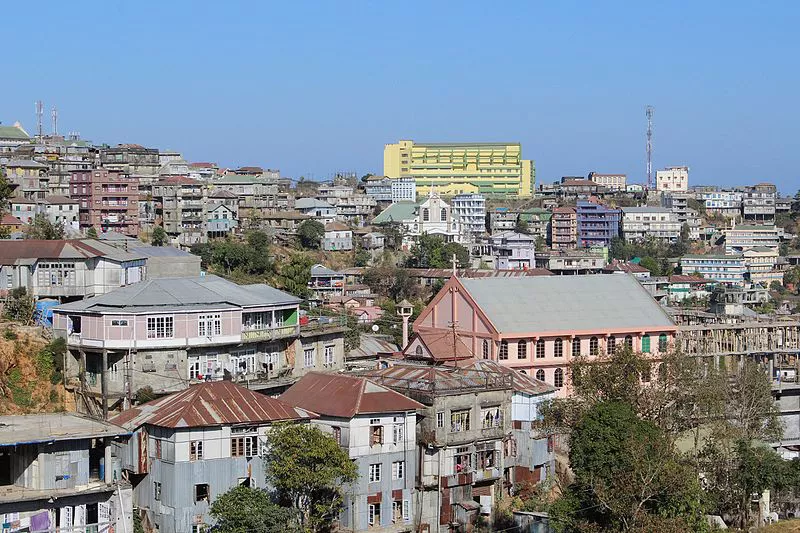

Lunglei is the second largest city of Mizoram and is also the headquarters of Lunglei district in Southern Mizoram. It is an ideal base for nature lovers for exploring the surrounding areas which are rich in flora and fauna, hamlets and landmarks linked with folklores and legends. A 175 kms drive from Aizawl, Lunglei is loftier than Aizawl, perched at an altitude of 1222 meters. An engraved image of Buddha found near Mualcheng village, about 50 kms from the town remains an enigma till date since no other Buddhist relics has been found elsewhere in the state.

At Tlabung village right next to the Bangladesh border, 98 km to the west of Lunglei, there is a memorial stone erected to the memory of Captain T.H. Lewin, a courageous and adventurous British pioneer whom the Mizos fondly called Thangliana, or "Man of Great Fame". Lewin was the Deputy Commissioner of Chittagong Hill Tracts when he entered Mizoram from Tlabung in 1865. He signed a peace treaty with one powerful Mizo chief of that time, Rothangpuia of Thangluah clan, following which he shifted his headquarters from Rangamati to Tlabung.
These are two bungalows constructed in 1903 in Serkawn village now adjoining Lunglei by Rev. J.H. Lorrain, elder brother of Rev. R.A. Lorrain and Rev. F.W. Savidge, fondly nicknamed Pu Buanga and Sap Upa respectively, and are believed to be the oldest buildings in Mizoram. These two pioneer missionaries from Welsh first arrived in Mizo soil in 1894 and established a Presbyterian Church mission in Aizawl, giving priority to learning the local dialect, formulation of the Mizo alphabet in the Roman script, compilation of the Mizo-English dictionary and translation of the Bible and hymns.


"A cemetery of the early Christians" is situated at Theiriat village near Lunglei. Before the pioneer missionaries Rev. R.A. Lorrain and Rev. F.W. Savidge arrived in Lunglei, Sehan Roy, a Khasi Officer who supervised the construction of Aizawl-Lunglei bridle path had evangelized some Mizo laborers and as many as 40 families had been converted by 1900. Harassed and ostracized, the new converts had no choice but to come together and set up a Christian village in Theiriat. Later, with the arrival of the missionaries these people immediately approached them and were one of the first to get formal education and their gravestones here bear quotations of the Bible verses and beautiful inscriptions in English.